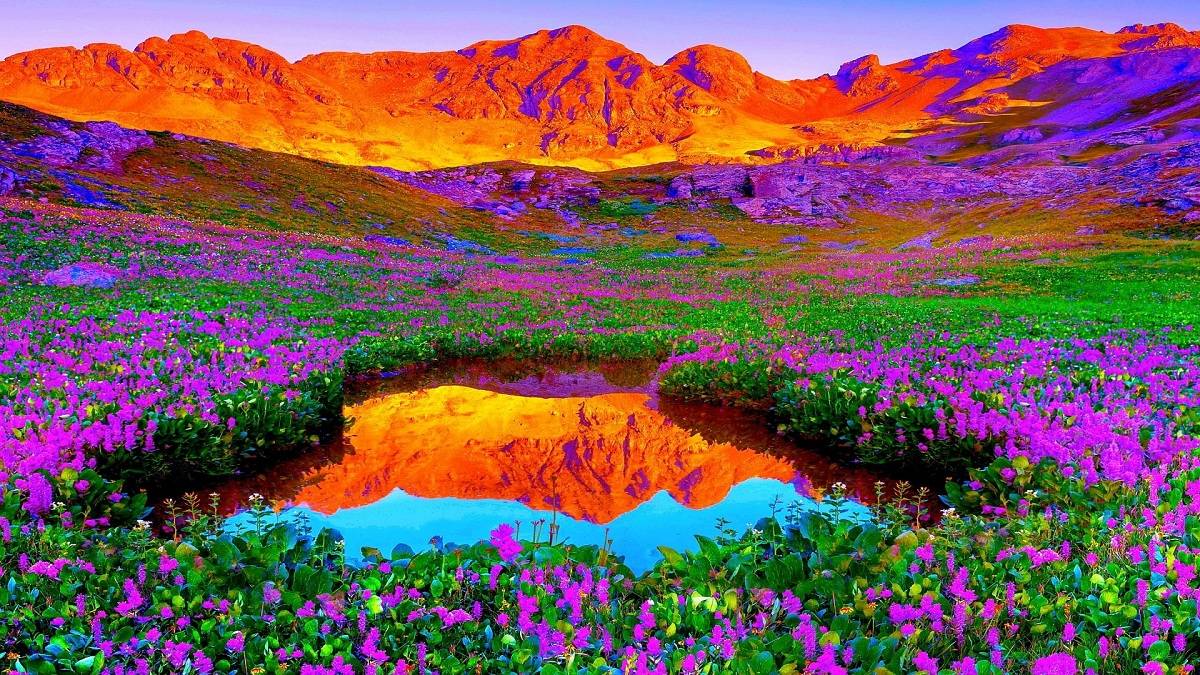IMPACT OF COLOUR
Colors in nature:
The world of nature is colorful and bright and human ingenuity cannot hope to match it. Right from the sky above to the sea below, nature abounds in the richness of color. The human eye and the human mind respond to this world of color and identify themselves with it. When a person is cheerful and bright we refer to him as a 'colorful personality', similarly the different colors are used to indicate human moods and attitudes: blue is associated with depression, white is likened with serenity, green with jealousy and red with rage. Color is also used to relieve tension. Psychologists have investigated the effect of colour on the working ability of workers and have come to the conclusion that certain colors are more conducive to Positive thinking than others.
Nature fulfils man's longing for color: there is variety in everything. The sky can be clear and blue, it can be dark with clouds, it reflects the glory of the rising sun and the variegated hues of the setting sun. The sea which is normally associated with blue is not really so all the time. The sea water can he blue, green, grey and many more subtle shades and even the rivers and streams reflect the surrounding area and acquire that colour. Coleridge's poem 'The Ancient Mariner' is rich in its description of the world of nature. People who do not observe are not able to notice the finer shades and are consequently not able to enjoy this valuable side of life.
In the west, seasonal changes bring in changes in the landscape. While spring is rich with colour, autumn provides a restful view to the eye with its soft browns and ripe greens and winter brings in the whiteness of snow along with its stillness conveying the effect of sleepiness and hibernation. And if on the one hand there is joy and vivacity in spring, there is coolness in the abundance of the green forests, and a challenge in the dark rocks of the mountains and an immensity in the vast, barren stretches of sand.
On the question of birds, I have discovered that in their world there are endless color combinations. If green and grey birds mate, the new born chick has a lovely soft green color; if yellow and blue mate the chicks may be either a heightened blue or a softened yellow. No painter's effort can successfully capture the elusive world of nature.
Nature's world of color, especially among the animals, has a deeper purpose than there variety. The colour of animals helps them to successfully camouflage themselves. If the toad is brown and mingles with the color of the earth, the frog merges with the green colour of the scum. The polar bear is white but not so the tropical bear. Fishes also have the ability to change colour in order to mingle with their surroundings as do some birds like the willow ptarmigan. Lizards also have different colors according to their surroundings - a desert lizard will be sand-colored while a lizard in a heavy monsoon area will be of greenish hue. Butterflies and insects also share this characteristic. This is not to say that animals and birds do not have bright colors which contrast with their surroundings. This also has a purpose. The bright colors of the peacock are not only a pleasure to the human eye but they also push the peahen into obscurity and offer her greater protection. A male bird may display some brilliant coloration to scare a rival. The Chinese ring-necked pheasant does exactly this, he puffs out his red pouches on the side of his neck when confronted by another male.
Thus color does not only give pleasure, it also has a purpose. Imagine life without the color of nature! It would indeed be dull and monotonous: the sparkle of life will not he there. Color also has brought up problems. The whole problem of racial discrimination is connected with the color of the human skin. Men are hidebound in their narrow beliefs and have not yet learnt to value the variety of color and have not understood nature's purpose behind this.


